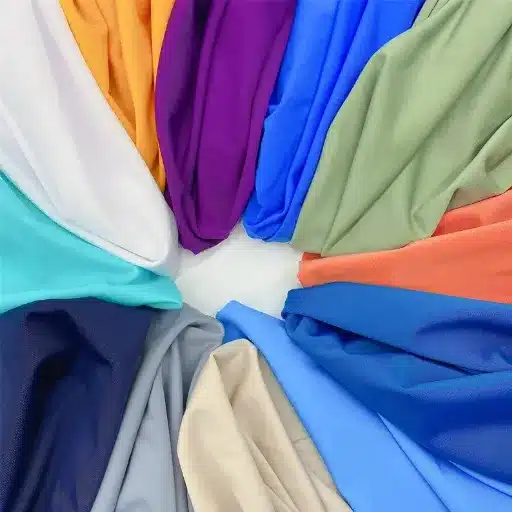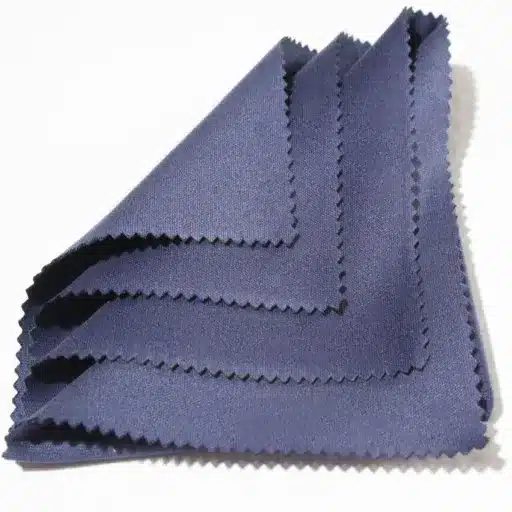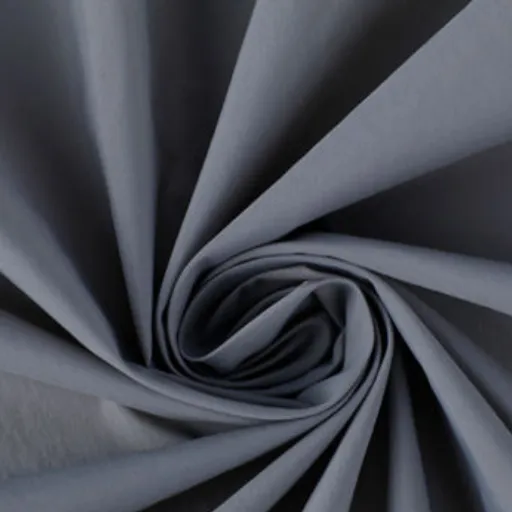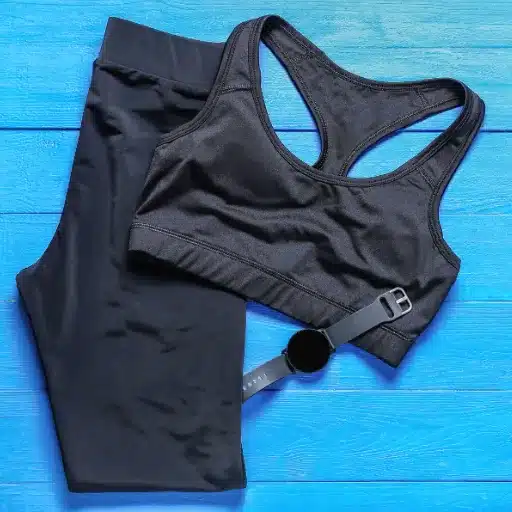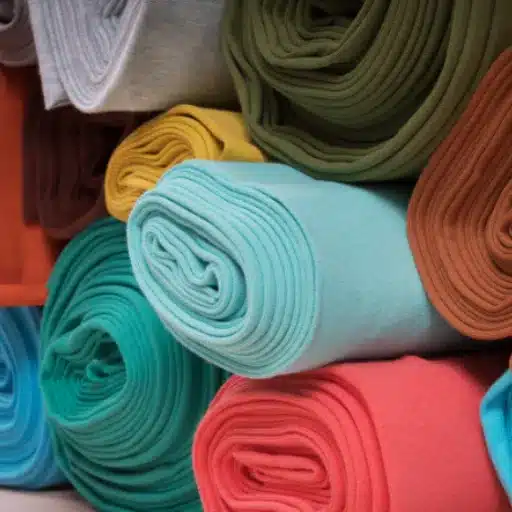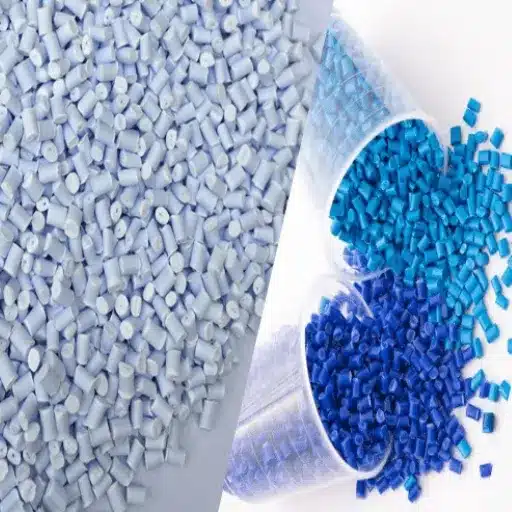Polyamide has been a staple of performance clothing for some time now, but what makes it so special? Known for its ruggedness, stretch, and lightweight feel, polyamide is really a blessing in manufacturing activewear and outdoor gear. One exciting feature that keeps sportsmen and adventurers comfortable while engaging in vigorous activities is breathability. But what’s the intricacy in polyamide doing so, and how does it differ from other kinds of fabrics? Join us in this blog post as we explore the science behind polyamide’s breathability, its benefits for performance clothing, and why it is the preference of anyone who demands both functionality and comfort.
Understanding Polyamide Fabric
What is Polyamide?
Polyamide is a synthetic fabric prepared from polymers having amide-group linkages in their chains. Nylon, the most popular form of polyamide, was initially developed as a substitute for silk and has since become a widely used industrial textile. It is prepared through polymerization, a chemical reaction in which monomers combine to form long, tough chains. The primary qualities of polyamide fabric are strength, elasticity, and resistance to abrasion, making it suitable for use in various industries. Being lightweight and having moisture-wicking capabilities makes it ideal for best-wear, where breathability and comfort are of paramount importance. The versatility of polyamide extends further to industrial materials, carpets, and even fishing lines.
Types of Polyamide Fabric
Polyamide fabrics are of several types, each suited to different requirements and applications. The principal types considered here are Nylon 6, Nylon 6,6, and aramids like Kevlar and Nomex.
Nylon 6
Nylon 6 has been widely used in textiles, carpets, and industrial cords due to its exceptional elasticity and resilience. Its high melting point and abrasion resistance make it suitable for applications that require high performance.
Nylon 6,6
This type provides greater strength, durability, and heat resistance than Nylon 6. It is applied in automotive parts, engineering plastics, and high-performance fabrics.
Aramids (Kevlar & Nomex)
Aramids are a class of heat-resistant and strong polyamide fibers. Kevlar is renowned for its use in bulletproof vests, ropes, and gloves that protect against abrasions. On the other hand, Nomex finds its uses in firefighting suits and aerospace applications due to its flame resistance.
Due to their distinct desirable features, each polyamide fabric can be utilized in various fields to enhance the functionality and effectiveness of everyday products.
Making Polyamide Fabric
Basically, a polyamide fabric is prepared via polymerizing monomers, usually originating as petrochemical materials. Monomers like adipic acid and hexamethylenediamine react through condensation to form long-chain polymers of nylon or related substances. They are then melted and extruded as fine, continuous filaments through spinnerets.
After extruding the fibers, they are rapidly cooled, stretched, and oriented to increase their tensile strength and flexibility. Depending on their final use, other processes, such as texturizing, aim at enhancing the texture, elasticity, and durability of the fabric. Ultimately, these polyamide fibers are woven or knitted into various forms of fabric, designed for a range of applications, from apparel to industrial uses.
The improvements witnessed in polymer chemistry and manufacturing techniques have mainly enhanced the efficiency and sustainability of polyamide production. Some manufacturers consider recycling or using bio-based alternatives during production so that this product is less harmful to the environment. Hence, the very versatility of polyamide makes it a fundamental material used by many industries, offering a compromise between being lightweight and strong.
The Breathability of Polyamide
Is Polyamide Fabric Breathable?
Polyamide fabric is renowned for its durability and versatility; however, its breathability varies significantly depending on its manufacturing process and usage. In general, naturally made materials cannot compete with polyamide for breathability, as heat and moisture trapping are some of the undesired characteristics of their synthetic nature. Thanks to the modern production technologies, the conditions of being less breathable are, for the most part, circumvented. These include the development of micro-perforations or mixtures with other fabric types, allowing their polyamide products to breathe better and possess good moisture-wicking capacity. Because they can combine moisture management and breathability, polyamide fabrics are well-suited for sportswear where both attributes are crucial. The fabric is designed to wick away moisture from the body as one sweats, creating a comfortable state during rigorous physical activities.
Considerations Affecting the Breathability of Synthetic Fabrics
Breathability in synthetic fabrics depends on several factors, including material composition, fabric construction, and technological advancements. For example, air and moisture permeability will depend on the fiber type used-whether it is polyamide or polyester. Polyamide tends to exhibit more moisture-wicking properties due to its relatively hydrophilic nature, whereas polyester can be processed for improved ventilation.
- Fabric Construction: The way the fabric is constructed also matters. Looser weaves or knit constructions permit more airflow through the fabric compared to denser constructions that inhibit breathability.
- Microperforations: Other improvements to ventilation include microperforations, which provide tiny openings within the fabric through which air can exchange.
- Advanced Coatings: Textile technology has evolved to create synthetic fabrics with coatings or finishes that facilitate the evaporation of sweat more effectively while maintaining their inherent strength.
Such fabrics, equipped with advanced moisture management systems, will wick away sweat more quickly, facilitate a rapid drying process, and provide comfort to the wearer during high-performance activities. These factors can help consumers choose materials that best serve their athletic or lifestyle needs.
Comparing Breathability: Polyamide vs. Polyester
| Aspect | Polyamide | Polyester |
|---|---|---|
| Feel | Softer feel | Less soft |
| Moisture Absorption | Greater moisture absorption | Lower moisture absorption |
| Drying Speed | Moderate drying | Quick-drying |
| Best For | Prolonged exertion with perspiration | Activities requiring frequent drying |
It is essential to consider the structural properties of polyamide and polyester, as well as their interaction from the perspective of modern manufacturing techniques, when evaluating their breathability. Generally, polyamide carries with it a softer feel with greater moisture absorption than polyester. Therefore, the sweat absorption and cooling sensation afforded for prolonged exertion that induces profuse perspiration are better served by polyamide. Polyester, on the other hand, has its moment of glory in quick-drying: it holds less water in its fibers, which then evaporates fast. For rigorous activities that require frequent drying, polyester is a good choice.
Recent fabric technological advances have further enhanced the breathability of these materials. Polyester fabrics featuring micro-ventilation designs or hydrophobic coatings allow for the passage of air and efficiently drain moisture. Conversely, polyamide can be manufactured with mesh-like weaves or combined with elastane to impart stretch, thereby managing airflow within the fabric. When discussing breathability, the equilibrium between technological enhancements and material choice determines comfort, which entirely depends on the particular activity and environmental conditions. When combined, they enable consumers to select performance wear that suits their needs almost effortlessly.
Applications of Polyamide in Activewear
Popular Activewear Made from Polyamide
Leggings
Provide a second-skin fit, allowing free movement during yoga and high-intensity training
Sports Bras
Offer support and comfort during various physical activities
Compression Wear
Provides athletes with a boost in blood circulation and helps reduce muscle fatigue
Running Jackets
Lightweight design with enhanced moisture-wicking efficiency and airflow
Envisioning polyamide as a material of high significance in activewear production, this balance yields strength combined with flexibility. Since polyamide is both rugged and comfortable, it is the first choice among brands for making leggings, sports bras, compression wear, and lightweight running jackets. Polyamide leggings, for instance, provide a second-skin fit, allowing the wearer to move freely during yoga exercises or high-intensity training. Compression wear, meanwhile, provides athletes with a boost in blood circulation and helps reduce muscle fatigue during endurance events. Then, through modern techniques, textured polyamide fabrics are being introduced in running tops to enhance moisture-wicking efficiency and airflow, providing continuous breathability during high-intensity activities. This variance in design and high-performance nature is the reason behind polyamide’s versatility in the activewear domain, serving both professional athletes and the average gym-goer.
Benefits of Polyamide in Performance Clothing
The primary factors that make polyamide a performance fibre are its exceptional strength, durability, and flexibility. The primary advantage polyamide offers is its lightweight nature, which provides maximum comfort during physical activities. Polyamide fibers have high elasticity, enabling the garment to retain its original shape even after prolonged stretching, which is ideal for activities such as running, cycling, and yoga.
Maximum comfort during activities
Retains shape after stretching
Prevents heat and discomfort
Maintains good hygiene
Increases garment lifespan
Another significant reason for its use lies in its water-wicking ability, which allows sweat produced by human skin to evaporate, thereby preventing heat and dryness from causing discomfort. It also dries up quickly, keeping all moisture away and hence maintaining good hygiene. On the other hand, polyamide is well known for wearing away against abrasion, thereby increasing the tala of activewear on incessant use. Currently, polyamide fabrics are treated with ultraviolet protection and antimicrobials, enhancing their functionality for outdoor athletes. The character offered by the material, which regulates body temperature in both heating and cooling effects, has established polyamides as an ideal material for athletic and performance wear.
Polyamide and Elastane in Apparel
This fabric is a blend of polyamide and elastane, renowned for its stretchability, durability, and comfort. Polyamide ensures strong resistance to wear and tear while maintaining a lightweight design. In contrast, elastane contributes with its supreme elasticity, enabling the garment to retain its shape and fit snugly on an animate body. The collaboration of dynamic fabric is incredibly indispensable in activewear, as flexibility and breathability are quintessential. According to research, elastane cushion blends with 15-30% elastane perform well in retaining stretch recovery and comfort throughout active scenarios. Additionally, the polyamide and elastane blend is particularly suitable for advanced treatments, including moisture-wicking and odor control technologies, making it a commonly used combination for high-performance sportswear and athleisure wear in everyday life. These factors combine to make polyamide and elastane one of the most sought-after fabric combinations in the textile industry, satisfying both function and style.
Choosing the Right Fabric for Your Needs
Selecting a Breathable Synthetic Fabric
When selecting synthetic fabrics, utmost attention should be paid to moisture management, durability, and comfort. Materials such as polyamide (nylon) and polyester have long been favored for their ability to wick moisture away from the skin to ensure you remain dry during strenuous activity. Additionally, choose fabrics that incorporate special treatments, such as hydrophilic coatings for enhanced ventilation or mesh paneling to promote faster sweat evaporation.
Key Selection Criteria:
- Fabric Weight and Weave: Typically, lightweight synthetics with a fine weave facilitate better air circulation and, consequently, increased breathability compared to heavy synthetics with a tight weave.
- Elastane/Spandex Blends: Be sure to check for elastane or spandex blends, as these allow for stretching and, in effect, boost the fabric’s breathability by promoting dynamic movement.
- Environmental Considerations: For environmentally conscious buyers, innovative recycled synthetic fabrics are available that preserve breathability and performance.
- Safety Certifications: Add to these certifications for safe and skin-friendly finishes—such as Oeko-Tex or Bluesign—to ensure you are choosing fabrics that are both good in performance and sustainable.
Polyamide VS Other Synthetics
| Synthetic Type | Key Strengths | Best Applications |
|---|---|---|
| Polyamide (Nylon) | Better abrasion resistance, smoothness, stretch | Activewear, high-performance garments |
| Polyester | Less stretch, less shrinkage, faster drying | Outdoor gear, quick-dry applications |
| Acrylic | Soft, woolly texture, warmth | Winter clothing, casual wear |
| Polypropylene | Lightweight, moisture barrier properties | Moisture barrier applications |
Polyamide, commonly known as nylon, stands out among synthetic fibers primarily because it achieves an almost perfect balance of durability, stretch, and weightlessness. Compared to polyester, which is nearly a twin counterpart, polyamide exhibits better abrasion resistance and smoothness, thus making nylon preferable for activewear and high-performance garments. Polyester, on the other hand, stretches less and shrinks less, and dries faster. These attributes make it more suitable for outdoor gear.
When compared with acrylics, polyamide has a higher tensile strength so it can hold more pressure and gets stretched without breaking under tension. It is the softness of acrylic that is preferred, which has a woolly texture, making it suitable for winter-day clothes. The structural configuration also allows polyamide to be more breathable and resistant to oily stains when compared to polypropylene, another synthetic variety used in moisture barrier applications.
Industry study data reveal that apart from the polyester stuff, polyamide has got a lot of energy invested into it, thus resulting in a higher environmental impact. Yet, advances in recycled polyamide production are steadily bridging the gap towards sustainability. Polyamide is, thus, differentiated from other synthetic materials depending on its intended use, as each is best in different performance categories so manufacturers and consumers can make informed decisions based on specific purposes.
Maintenance and Care of Polyamide Fabric
The fabric polyamide is considered tough and resilient, but proper care must be administered for optimal performance and to ensure lasting durability. The washing of polyamide clothing requires cool to lukewarm water and a mild detergent, as chemical attacks may eventually weaken the fibers. Likewise, neglecting to wash and dry under scorching temperatures can be detrimental, promoting shrinking or losing shape. Should polyamide be hung to dry, that is the best option; if tumble-drying must be resorted to, prefer the lowest heat setting. For ironing, set a low iron temperature; otherwise, it may melt or scorch the fabric, as heat is incompatible with polyamide.
Care Tips:
- Use cool to lukewarm water with mild detergent
- Air dry when possible; use lowest heat if tumble drying
- Iron on low temperature to prevent melting
- Treat stains immediately with mild stain remover
- Add white vinegar to remove odors
- Store in cool, dry area away from sunlight
For stain removal, treat stains as soon as possible with a mild stain remover before washing. Polyamide fabrics may sometimes retain odors; therefore, a fabric refresher spray or adding white vinegar in small amounts to the washing can work wonders in removing unpleasant smells. Store polyamide things in a cool, dry area away from the penetrating rays of sunlight for as long as possible, as they can cause fading and degradation. If well-maintained, polyamide textiles can remain strong, stretchy, and vibrant for years.
The Future of Polyamide in Fashion
Innovations in Polyamide Fabric Technology
Recent years have seen dramatic innovations in polyamide fabric technology, and the aspect that interests me most is sustainability in its production. Traditional polyamide, also known as nylon, is derived from petroleum, which is where environmental concerns are raised. Now, new-age manufacturing techniques promote the production of bio-based polyamides from renewable raw materials, such as castor beans. These new technologies significantly reduce the carbon footprint of conventional polyamide while offering the same strength, flexibility, and durability. Moreover, the promising developments in recyclable and reusable polyamide are now at the forefront of enabling a circular economy for the fashion industry.
Another remarkable breakthrough involves instilling intelligent properties into polyamide fabrics. For example, through nanotechnology and smart textile innovations, polyamides have been endowed with properties such as moisture-wicking, temperature-regulating, and antibacterial capabilities. All these features are making polyamide a very versatile choice for activewear, outdoor gear, and fashionable wear. I remain deeply intrigued by how these technologies enhance user experience and how they pave the way for applications of a technically advanced nature, including wearable computing and medical textiles.
🌱 Sustainability Focus
Bio-based polyamides from castor beans and other renewable materials reducing carbon footprint
♻️ Circular Economy
Recyclable and reusable polyamide developments enabling circular fashion economy
🧪 Smart Properties
Nanotechnology integration providing temperature regulation and antibacterial capabilities
💻 Advanced Applications
Wearable computing and medical textiles through advanced textile technology
From now on, eco-innovations and advanced functionality will undoubtedly be the DNA of the future of polyamide fabric technology. Whether it is new recycling methods, renewable feedstocks, or the infusion of innovative textile technology, polyamide will undoubtedly remain a leader in the arena of fashion and beyond. These developments continually underscore how the fabric can strike a balance between sustainability and performance, yielding solutions for the ever-growing environmental issues and the demand for innovation in the textile industry.
A Sustainable Alternative to Traditional Polyamide
There are some innovative and eco-friendly alternative processes to conventional polyamide, which are drawing attention in the textile industry these days. The chief innovation is the manufacture of polyamide from renewable sources, such as castor oil. This bio-polyamide offers the advantage of reduced use of non-renewable fossil fuels and lower greenhouse gas emissions during its production cycle. The other alternative is recycled polyamide, typically derived from post-consumer waste materials such as fishing nets, carpets, and textile scraps. Transforming such materials into high-grade fibers is a way for manufacturers to reduce waste that ends up in landfills and oceans, while putting less strain on virgin resources.
Other emerging technologies support the development of biosynthetic polyamides. They are synthesized using engineered microorganisms that generate the building blocks of polyamide fibers in a much more sustainable and low-energy approach. The method thus reduces carbon emissions while decreasing dependence on injurious chemical processes that may be conventionally used in the production of synthetic fibers. Aquafil is one of many companies currently driving the scale-up of these solutions to increase accessibility in the textile and fashion industries. Their adoption will greatly reduce the environmental footprint of polyamide production. Innovation, coupled with responsible material choices, marks the path toward a greener future in fashion and textiles.
Performance Apparel Trends Using Polyamide
In my opinion, performance apparel trends leveraging polyamide have been in long-term development. Still, recent sudden formations were occasioned by material innovations and consumers demanding a blend of performance with sustainability. One significant change is the increasing infusion of recycled polyamide into active and outdoor apparel lines. These companies found a market for salvaged nylon fibers, such as Econyl, derived from post-consumer waste, mostly from fishing nets or fabric scraps. This material retains the durability, elasticity, and moisture-wicking properties of virgin polyamide but has a significantly lesser environmental impact. The shift reflects growing concern that circular fashion is another step toward conserving finite resources.
Another significant trend is the implementation of innovative technologies on polyamide textiles to enhance performance. Now, polyamide smart textiles have UV protection, antimicrobial treatments to resist odor, and thermoregulation to help moderate temperatures during physical activity. Another emerging trend is seamless polyamide-based designs, which eliminate bulky stitching for maximum comfort and ease of movement.
Ultimately, these phenomena reshaping the use of polyamide in performance wear involve the incorporation of recycled materials and the introduction of new functionalities. Keeping up with these trends, performance brands serve as the interface between innovation and environmental consciousness.
Reference Sources
-
Benefits and Uses of Polyamide Fabric – Highlights the breathable and moisture-wicking properties of polyamide, making it ideal for comfort and performance.
-
Polyamide vs. Cotton — What’s Best for the Tropics? – Discusses how breathable weaves of polyamide help manage heat and enhance comfort in warm climates.
-
Polyamide vs. Polyester: Differences and Applications – This article explores the differences between polyamide and polyester, focusing on their elasticity, softness, breathability, and durability, and highlighting their roles in high-performance fabrics.
- Click here to read more.
Frequently Asked Questions (FAQs)
So what kinds of polyamide fabrics are breathable?
Various kinds of polyamide fabrics are deemed breathable. Among these kinds is nylon, which is a well-established polyamide with properties of strength and lightweight. These polyamide fiber fabrics typically feature a mesh structure that allows for airflow. Additionally, blends with elastane enhance stretch and comfort levels, which benefit active apparel. When these types of fabrics allow air to flow, they also facilitate temperature regulation of the wearer’s body; hence, these polyamides can be used for either sportswear or casualwear. Whenever the choice of polyamide fabric occurs, the breathability factor of the garment comes under assessment.
How do you compare the breathability of polyamide to polyester?
Compared to polyester, polyamides are generally more breathable. Although both are synthetic fibers, polyamides possess a greater moisture-wicking ability, keeping you drier. Polyester also tends to trap more heat than polyamide, thus adding to discomfort during exercises. Polyamides are also softer and stretchier, thereby enhancing the fit of garments like tights and leggings. However, on the other hand, polyester fabrics are usually cheaper; hence, that could sway a consumer’s mind. Ultimately, choosing polyamide or polyester will depend on the end user’s needs and personal preferences.
Can polyamide fabrics be used in lingerie and stockings?
Lingerie and stockings find themselves endowed with light service for softness and stretch from polyamide. Their fine weaving ensures a comfortable and flattering fit, ideal for high-quality garments. Apart from that, it dries quickly, an everyday consideration that is rarely taken into account. Various lingerie brands utilize polyamide-based blends to provide the stretch and support that enhance the wearer’s experience. Other popular lingerie fabrics include multiple types of natural fibers, such as silk and wool. However, polyamide has an advantage over them in that it is both cheaper and more durable. Polyamide is a versatile material that finds applications in various types of intimate apparel.
Is polyamide a synthetic material that biodegrades?
Polyamide is indeed a synthetic material made from petroleum-based products. It will not readily biodegrade, but can take anywhere from hundreds to thousands of years to do so in landfill sites. This has led to environmental concerns, making the matter distinct from natural fibers such as cotton or wool, which are generally considered environmentally friendly. Although some brands are adopting trends toward biodegradable polyamide, the conventional form remains non-renewable and may pose a threat to plastic pollution. Therefore, consumers need to consider the environmental impact of polyamide textiles before making a purchase.
What are the common uses of polyamide fabrics in textile products?
The textile industry counts polyamide fabrics as being used in the majority of textile products due to their durability and flexibility. It is commonly used in sportswear, outdoor gear, and activewear because it offers breathability and moisture-wicking benefits. Think of it in everyday clothes such as tights, leggings, and lingerie. The material’s abrasion resistance lends itself to high-performance uses, whereas its softness leans toward casual wear. Furthermore, polyamide is used in home textiles, such as curtains and upholstery, because it is resilient and easy to maintain. Hence, polyamide, being so versatile, would probably find other applications in the textile industry.

